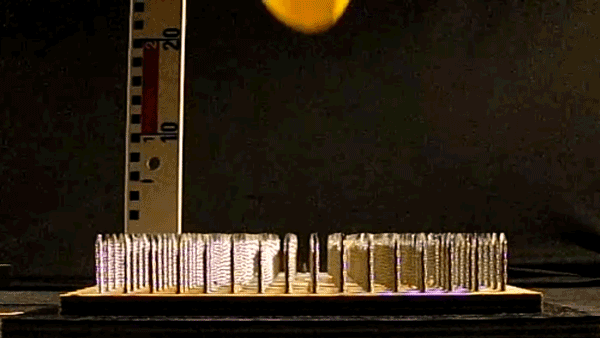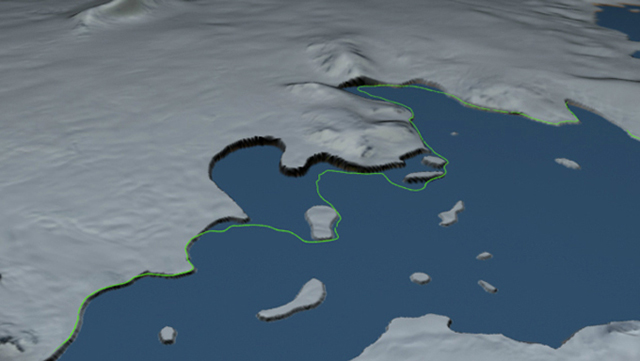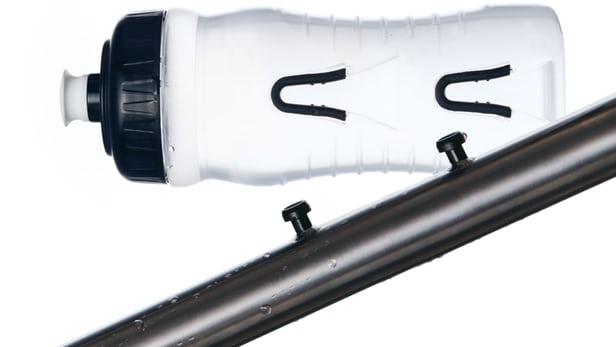Is it possible to bounce a water balloon off a bed of nails? Surprisingly, yes.
In a study published this month in The European Journal of Physics, scientists dropped water balloons on a grid of 256 nails and filmed them bouncing off in slow motion.
What’s the point, you ask? In this GIF science lesson, we learn about the pancake bounce effect and how making tiny things giant can sometimes make them easier to comprehend.

Researchers demonstrated in a slow-motion recording how a water balloon hitting a bed of nails responded with a “pancake bounce.” The video pauses at the moment the balloon achieves the pancake-like state. Moevius, et al.
Tina Hecksher, a physicist at Roskilde University in Denmark assigned this task as a project for some of her students after learning how water droplets bounced off super-water-repelling surfaces in a 2014 study by Julia Yeomans, a physicist at the University of Oxford, and her colleagues. Read more











